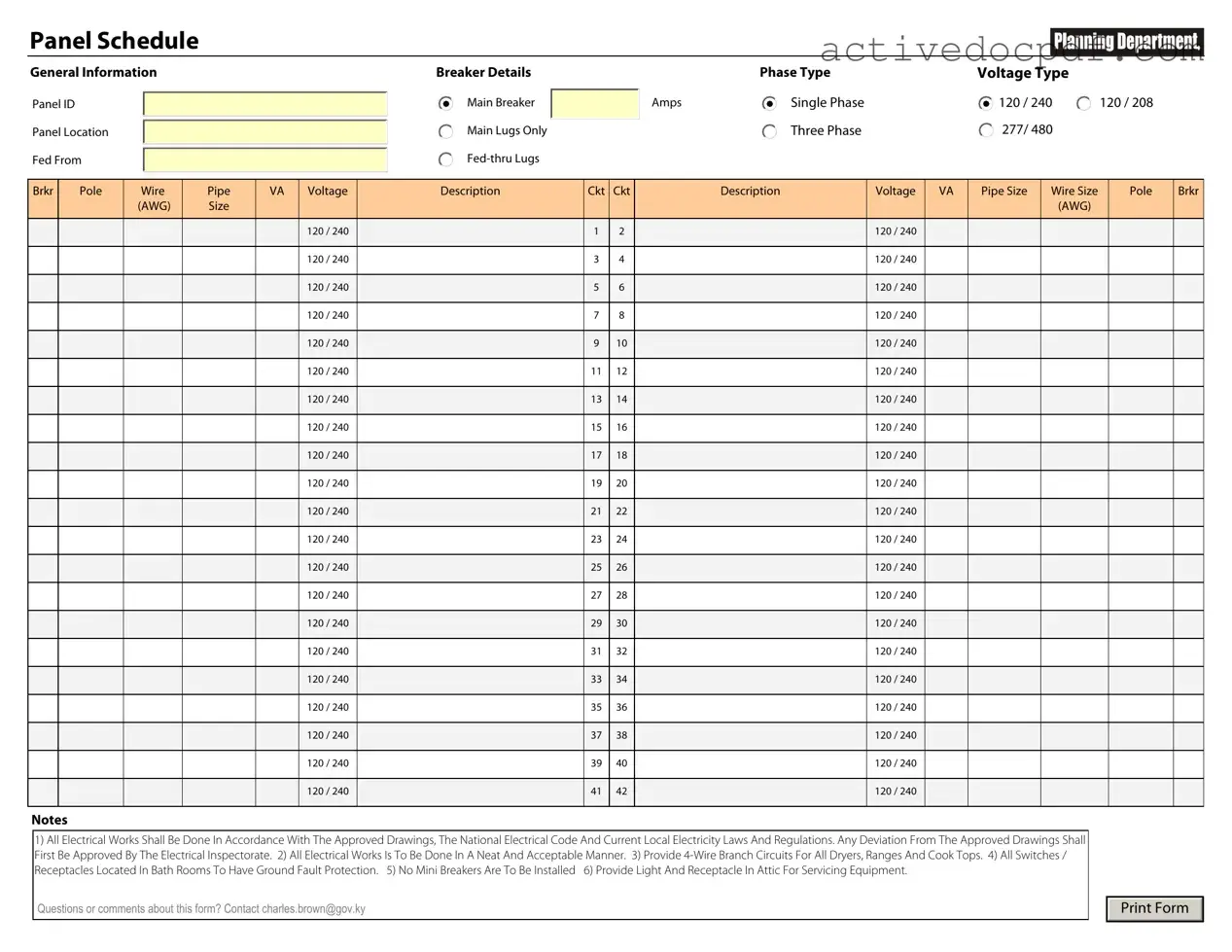What is an Electrical Panel Schedule?
An Electrical Panel Schedule is a document that outlines the distribution of electrical circuits within a building. It details each circuit's load, the circuit breaker size, and the specific areas or equipment the circuits serve. This schedule helps ensure that the electrical system is balanced and that circuits are not overloaded.
Why is an Electrical Panel Schedule important?
The importance of an Electrical Panel Schedule cannot be overstated. It provides a clear overview of the electrical system, which aids in troubleshooting and maintenance. Additionally, it is essential for safety, as it helps prevent electrical overloads and potential hazards. Having an accurate schedule is crucial for compliance with local building codes and regulations.
How do I create an Electrical Panel Schedule?
Creating an Electrical Panel Schedule involves several steps:
-
Identify all circuits in the electrical panel.
-
Record the load for each circuit, which is typically measured in amperes.
-
Note the size of the circuit breaker for each circuit.
-
Indicate the specific areas or equipment that each circuit serves.
-
Review and verify the information for accuracy.
Using software tools can simplify this process, but manual documentation is also effective.
Who should maintain the Electrical Panel Schedule?
The responsibility for maintaining the Electrical Panel Schedule typically falls to the building owner or facilities manager. However, electricians and electrical engineers should also be involved, especially when making changes to the electrical system. Regular updates are necessary to reflect any modifications, such as new circuits or equipment installations.
What should I do if I find an error in the Electrical Panel Schedule?
If an error is discovered in the Electrical Panel Schedule, it is important to address it promptly. Follow these steps:
-
Document the error clearly, noting the specific circuit and the nature of the mistake.
-
Consult with a qualified electrician or electrical engineer to verify the correction.
-
Update the schedule to reflect the accurate information.
-
Notify relevant personnel about the changes to ensure everyone is informed.
Taking these actions helps maintain the integrity and safety of the electrical system.
